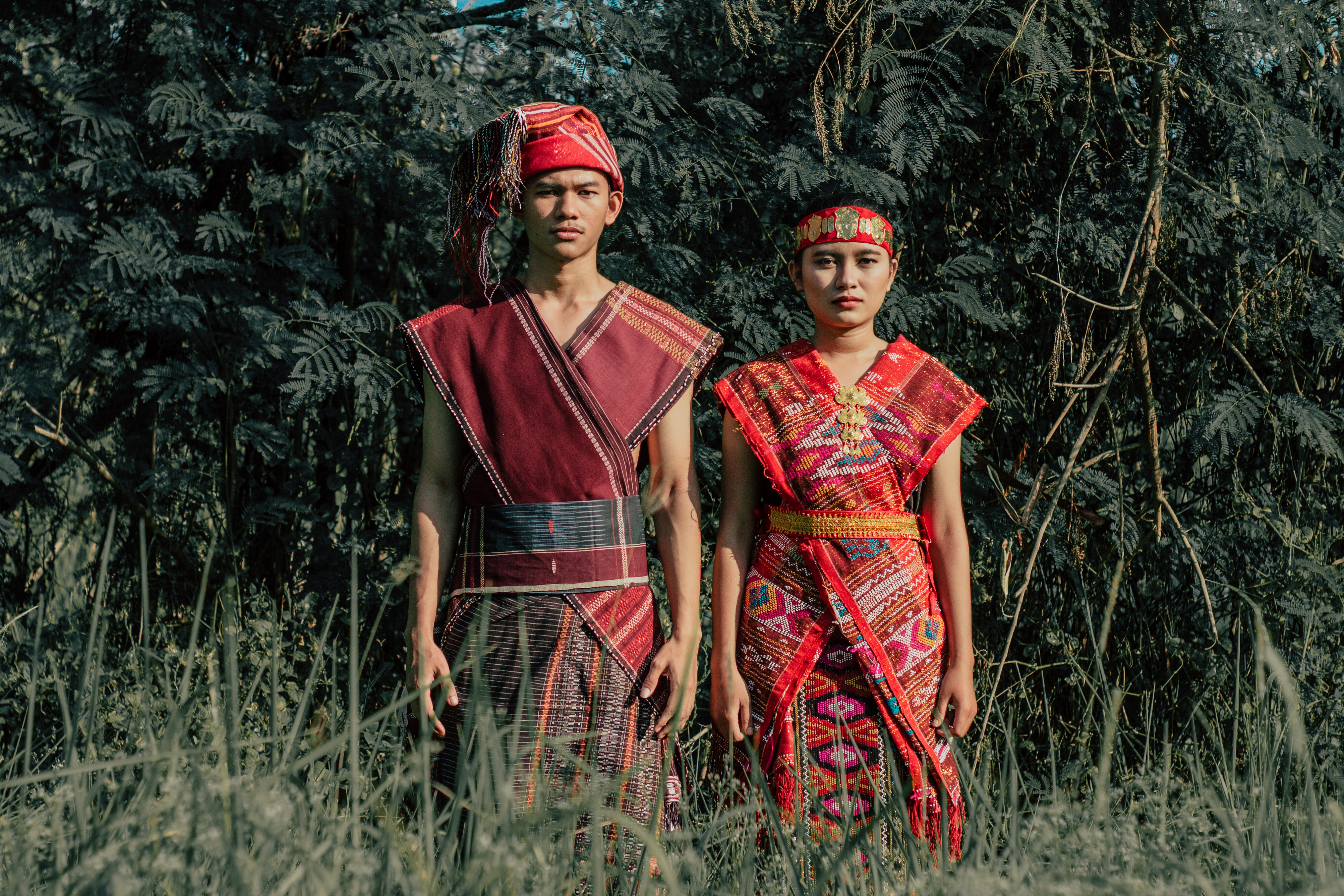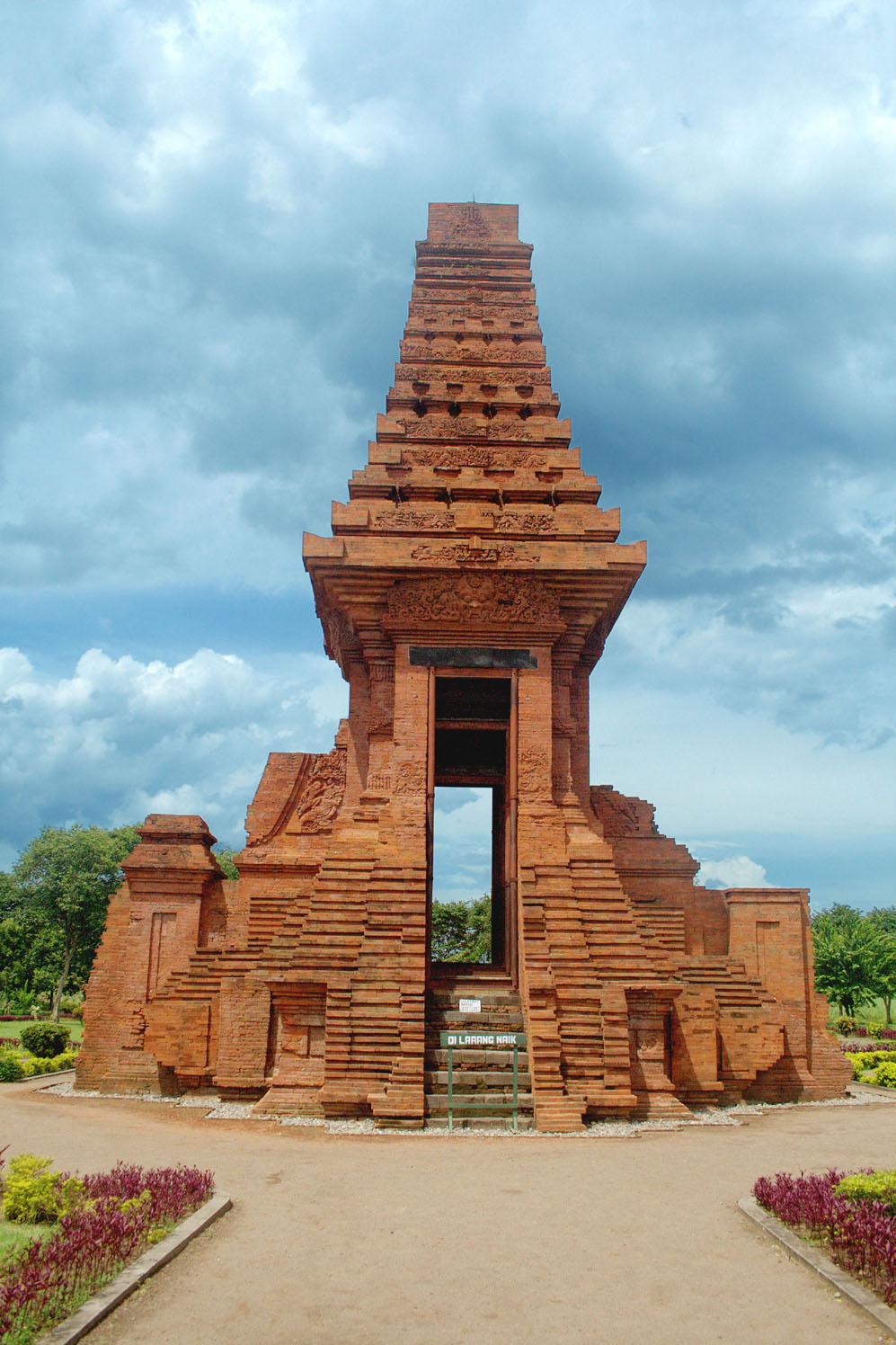|
Pamalayu Expedition
The Pamalayu campaign was a diplomatic and military expeditionary force sent by the Javanese King Kertanegara of Singhasari to conquer the Sumatran Melayu Kingdom. It was decreed in 1275, though perhaps not undertaken until later. Little is known about the results of the expedition. The Padang Roco Inscription dated from 1286 states that a religious statue of Amoghapasa was established at Dharmasraya on the orders of Kertanagara, and that all the inhabitants of Melayu and especially their king, Tribhuwanaraja rejoiced at the presentation of the gifts. The expedition arguably established Javanese domination over Melayu and trade in the Strait of Malacca. To cement the relationship between the two kingdoms, a political marriage was arranged. According to the Pararaton, two Malay princesses, Dara Petak and Dara Jingga, went to Java, originally intended for Kertanegara. However following his demise by Jayakatwang, princess Dara Petak would later be married to Kertanegara's successor, ... [...More Info...] [...Related Items...] OR: [Wikipedia] [Google] [Baidu] |
Raden Wijaya
Raden Wijaya or Raden Vijaya (also known as Nararya Sangramawijaya, regnal name Kertarajasa Jayawardhana) (reigned 1293–1309) was a Javanese emperor, and the founder and first monarch of the Majapahit Empire.Slamet Muljana, 2005, ''Runtuhnya Kerajaan Hindu-Jawa dan Timbulnya Negara-negara Islam di Nusantara'', Yogyakarta: LKiS, . The history of his founding of Majapahit was written in several records, including Pararaton and Negarakertagama. His rule was marked by the victory against the army and the Mongol navy of Kublai Khan's Yuan dynasty. Ancestry There are several versions of his ancestry. According to Pararaton, Raden Wijaya was the son of Mahisa Campaka, prince of Singhasari. According to later controversial source from 17th century, Pustaka Rajyarajya i Bhumi Nusantara, Raden Wijaya was the son of Rakeyan Jayadarma (son of Sunda-Galuh King Prabu Guru Darmasiksa) and Dyah Lembu Tal (daughter of Mahisa Campaka from Singhasari). Rakeyan Jayadarma was poisoned and ... [...More Info...] [...Related Items...] OR: [Wikipedia] [Google] [Baidu] |
Military History Of Indonesia
The military history of Indonesia includes the military history of the modern nation of Republic of Indonesia, as well as the military history of the states which preceded and formed it. It encompassed a kaleidoscope of conflicts spanning over a millennia. The ancient and medieval part of it began as tribal warfare began among indigenous populations, and escalated as kingdoms emerged. The modern part is defined by foreign colonial occupations, battles for independence through guerrilla warfare during Indonesian National Revolution, regional conquests and disputes with neighbouring countries, as well as battles between the Republic and separatist factions. Since the formation of the Republic, the military has played significant role in state affairs. However, in Post-Suharto era, the Indonesian military has retreated from politics, yet it still possesses some influences. As an archipelagic nation, historically Indonesia has always been a maritime power since Srivijaya and Maj ... [...More Info...] [...Related Items...] OR: [Wikipedia] [Google] [Baidu] |
Borneo
Borneo (; id, Kalimantan) is the third-largest island in the world and the largest in Asia. At the geographic centre of Maritime Southeast Asia, in relation to major Indonesian islands, it is located north of Java, west of Sulawesi, and east of Sumatra. The island is politically divided among three countries: Malaysia and Brunei in the north, and Indonesia to the south. Approximately 73% of the island is Indonesian territory. In the north, the East Malaysian states of Sabah and Sarawak make up about 26% of the island. The population in Borneo is 23,053,723 (2020 national censuses). Additionally, the Malaysian federal territory of Labuan is situated on a small island just off the coast of Borneo. The sovereign state of Brunei, located on the north coast, comprises about 1% of Borneo's land area. A little more than half of the island is in the Northern Hemisphere, including Brunei and the Malaysian portion, while the Indonesian portion spans the Northern and Southern hemisph ... [...More Info...] [...Related Items...] OR: [Wikipedia] [Google] [Baidu] |
Simalungun People
The Simalungun people are an ethnic group in North Sumatra, considered one of the Batak peoples. Simalungun people live mostly in Simalungun Regency and the surrounding areas, including the city of Pematang Siantar, an autonomous city, but previously part of Simalungun Regency. The Simalungun live in the 'Eastern Batak' lands, bordering the lands of the Batak Toba to the south and west, and the Batak Karo to the north. The Simalungun are considered to have more in common with their Karo than Toba neighbours, both groups having migrated from Toba and Pakpak in order to participate in trade. The Simalungun language is still spoken by many Simalungun people, in addition to Indonesian. Traditional Simalungun life Long before Dutch colonialism was established in North-East Sumatra, people now known collectively as Batak Timur (Eastern Batak) claimed the area as their original homeland, for example Sin Raya (Raya's peoples), Sin Silou (Silou's peoples), Sin Bandar (Bandar's peoples) ... [...More Info...] [...Related Items...] OR: [Wikipedia] [Google] [Baidu] |
Aru Kingdom
The Aru (كراجأن ارو; or Haru) was a major Sumatran kingdom from the 13th to the 16th century. It was located on the eastern coast of North Sumatra, Indonesia. In its heyday the kingdom was a formidable maritime power, and was able to control the northern part of the Malacca strait. The kingdom was initially established as a Karo polity. The indigenous population practiced native animism as well as Hinduism. During the 13th century Islam came to be practiced alongside the existing faiths. Aru's capital was located close to present-day Medan city and Deli Serdang. The people of the kingdom are believed to have been descendants of the Karo people from the interior of North Sumatra. Location Traditionally, the location of Haru or Aru is connected to the site of its successor state, the Sultanate of Deli, which was in and around the city of Medan and Deli Serdang today, as suggested by British orientalist Winstedt. However, Groenveldt, a Dutch historian, has suggested tha ... [...More Info...] [...Related Items...] OR: [Wikipedia] [Google] [Baidu] |
Adityawarman
Adityawarman (formal regnal name Maharajadiraja Srīmat Srī Udayādityawarma Pratāpaparākrama Rājendra Maulimāli Warmadewa. ) was a king of Malayapura Suvarnabhumi, and is the successor of the Mauli dynasty based on central Sumatra. He was the cousin of Jayanegara, king of Majapahit from 1309–1328, and the grandson of Tribhuwanaraja, king of Melayu Kingdom. Adityawarman was awarded the Senior Minister of Majapahit (''wreddamantri'') and used this authority to launch Majapahit military expansion plans and conquered east coast region in Sumatra. Adityawarman then founded the royal dynasty of Minangkabau in Pagaruyung and presided over the central Sumatra region to take control of the gold trade between 1347 and 1375. Early life Adityawarman was born around in 1294 in Trowulan, East Java, the capital of the kingdom of Majapahit, as recorded in the poem of Pararaton. According to Kuburajo inscription found in Limo Kaum, West Sumatra, Adityawarman's father was Majapahit nobl ... [...More Info...] [...Related Items...] OR: [Wikipedia] [Google] [Baidu] |
Adwayawarman
Adwayawarman was the father of King Adityawarman of Malayapura kingdom (now in West Sumatra province, Indonesia) as mentioned in the Kuburajo inscription, Kuburajo I Inscription. His alias name was Adwayadwaja, as he was called in the Bukit Gombak Inscription. Historian Slamet Muljana suspected that Adwayawarman was also the same person as Adwayabrahma, who was mentioned in the Padang Roco Inscription. Adwayabrahma was the name of one of the Javanese high officials (''Rakryan Mahamantri'') of the Singhasari kingdom, who was sent to transport the statue of Amoghapasha to the Dharmasraya kingdom. If this notion is right, Adityawarman was a king of Malayo-Javanese mixed blood. It was told in the Javanese chronicle Pararaton (''Book of Kings'') that Dara Jingga, one of the Malay princesses who was brought back to Java with the Pamalayu expedition, was married to a Javanese nobleman (''alaki Dewa''). His son was called ''Tuhan Janaka'' or ''Sri Marmadewa'', who finally reigned in Sumatra ... [...More Info...] [...Related Items...] OR: [Wikipedia] [Google] [Baidu] |
Landak Regency
Landak Regency is a Regencies of Indonesia, regency of West Kalimantan province, Indonesia. It was created in 1999 from the northeastern part of Pontianak Regency. It covers 9,909.10 km2 and had a population of 329,649 at the 2010 Census and 397,610 at the 2020 Census. The principal town lies at Ngabang. Landak is also one of the four regencies in West Kalimantan whose population is predominantly Catholic, the others being Sanggau Regency, Sanggau, Sekadau Regency, Sekadau, and Sintang Regency, Sintang. Administrative Districts Landak Regency consists of thirteen Districts of Indonesia, districts (''kecamatan''), tabulated below with their areas and their populations at the 2010 Census and the 2020 Census.Badan Pusat Statistik, Jakarta, 2020. The table also includes the number of administrative villages (rural ''desa'' and urban ''kelurahan'') in each district and its post code. Climate Ngabang, the seat of the regency has a tropical rainforest climate (Af) with heavy ... [...More Info...] [...Related Items...] OR: [Wikipedia] [Google] [Baidu] |
Batak
Batak is a collective term used to identify a number of closely related Austronesian ethnic groups predominantly found in North Sumatra, Indonesia, who speak Batak languages. The term is used to include the Karo, Pakpak, Simalungun, Toba, Angkola, and Mandailing which are related groups with distinct languages and traditional customs ('' adat''). Prehistory Linguistic and archaeological evidence indicates that Austronesian speakers first reached Sumatra from Taiwan and the Philippines through Borneo or Java about 2,500 years ago, and the Batak probably descended from these settlers. While the archaeology of southern Sumatra testifies to the existence of neolithic settlers, it seems that the northern part of Sumatra was settled by agriculturalists at a considerably later stage. Although the Batak are often considered to be isolated peoples thanks to their location inland, away from the influence of seafaring European colonials, there is evidence that they have been i ... [...More Info...] [...Related Items...] OR: [Wikipedia] [Google] [Baidu] |
Jayanegara
Jayanegara or Jayanagara (formal regnal name Sri Maharaja Wiralandagopala Sri Sundarapandya Dewa Adhiswara, or Sri Sundarapandyadevadhisvara Vikramottungadeva, also known as Kala Gemet), Prince of Kediri in 1295, reigned from 1309 to 1328, was a Javanese emperor and the second monarch of Majapahit empire. Jayanegara was the heir, crown prince, the only son of Raden Wijaya, the founder of Majapahit. The story of his life was written in several records, including Pararaton and Negarakertagama. His reign saw the beginning of Gajah Mada's rise as an important figure in the empire. Early life Raden Wijaya took all of Kertanegara's four daughters' hands in marriage. The siblings were Paramesvari Tribhuvana the oldest, Prajnaparamitha, Narendra Duhita, and Gayatri Rajapatni the youngest. The reasons of Raden Wijaya's practice of sibling polygamy was to ensure his claim of legitimacy, also to prevent the contest for Kertanegara's Singhasari legacy. Raden Wijaya also took Indreswari (also k ... [...More Info...] [...Related Items...] OR: [Wikipedia] [Google] [Baidu] |
Majapahit
Majapahit ( jv, ꦩꦗꦥꦲꦶꦠ꧀; ), also known as Wilwatikta ( jv, ꦮꦶꦭ꧀ꦮꦠꦶꦏ꧀ꦠ; ), was a Javanese people, Javanese Hinduism, Hindu-Buddhism, Buddhist thalassocracy, thalassocratic empire in Southeast Asia that was based on the island of Java (in modern-day Indonesia). It existed from 1293 to circa 1527 and reached its peak of glory during the era of Hayam Wuruk, whose reign from 1350 to 1389 was marked by conquests that extended throughout Southeast Asia. His achievement is also credited to his prime minister, Gajah Mada. According to the () written in 1365, Majapahit was an empire of 98 tributaries, stretching from Sumatra to New Guinea; consisting of present-day Indonesia, Singapore, Malaysia, Brunei, southern Thailand, Timor Leste, southwestern Philippines (in particular the Sulu Archipelago) although the scope of Majapahit sphere of influence is still the subject of debate among historians. The nature of Majapahit relations and influences upon its ... [...More Info...] [...Related Items...] OR: [Wikipedia] [Google] [Baidu] |





.jpg)